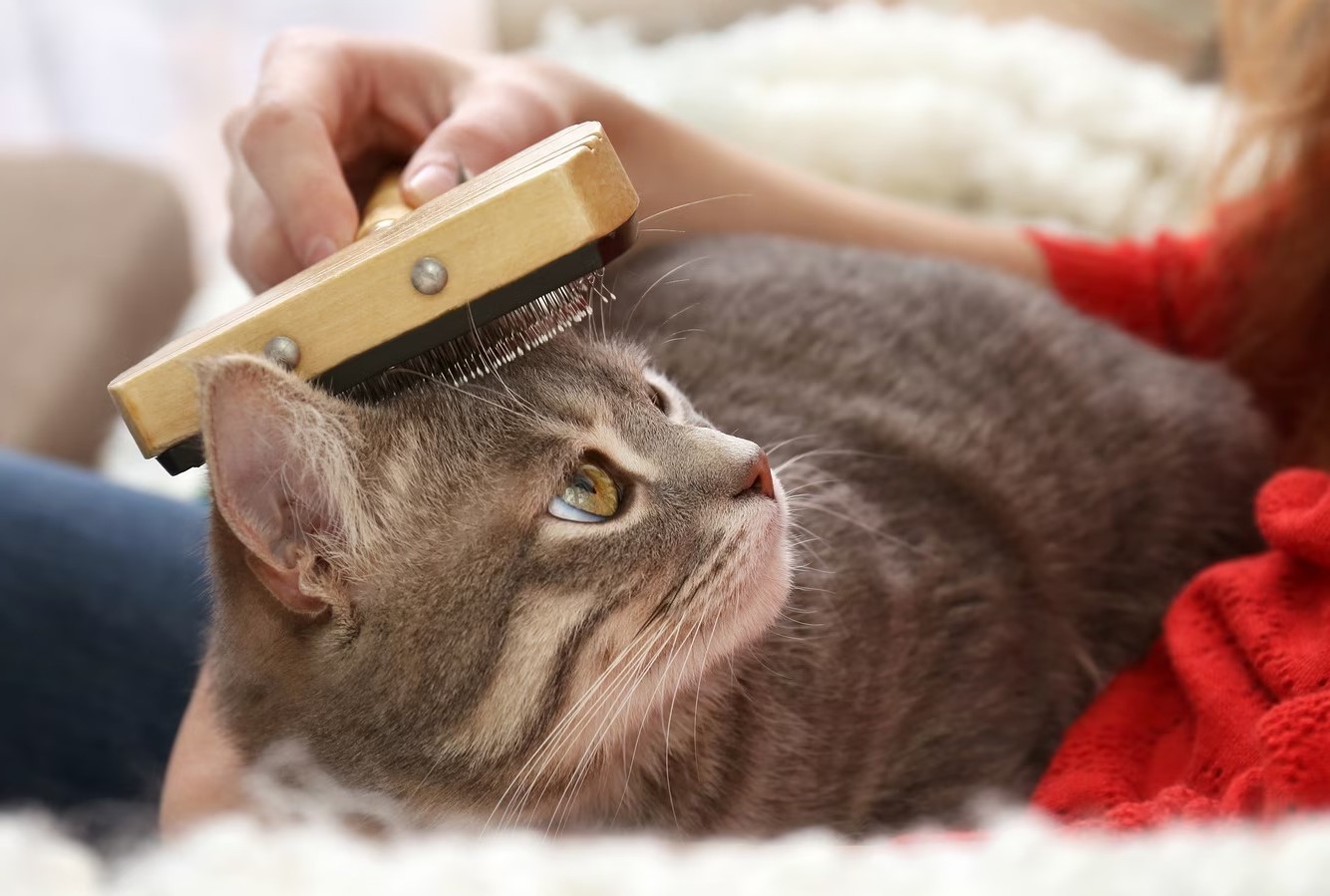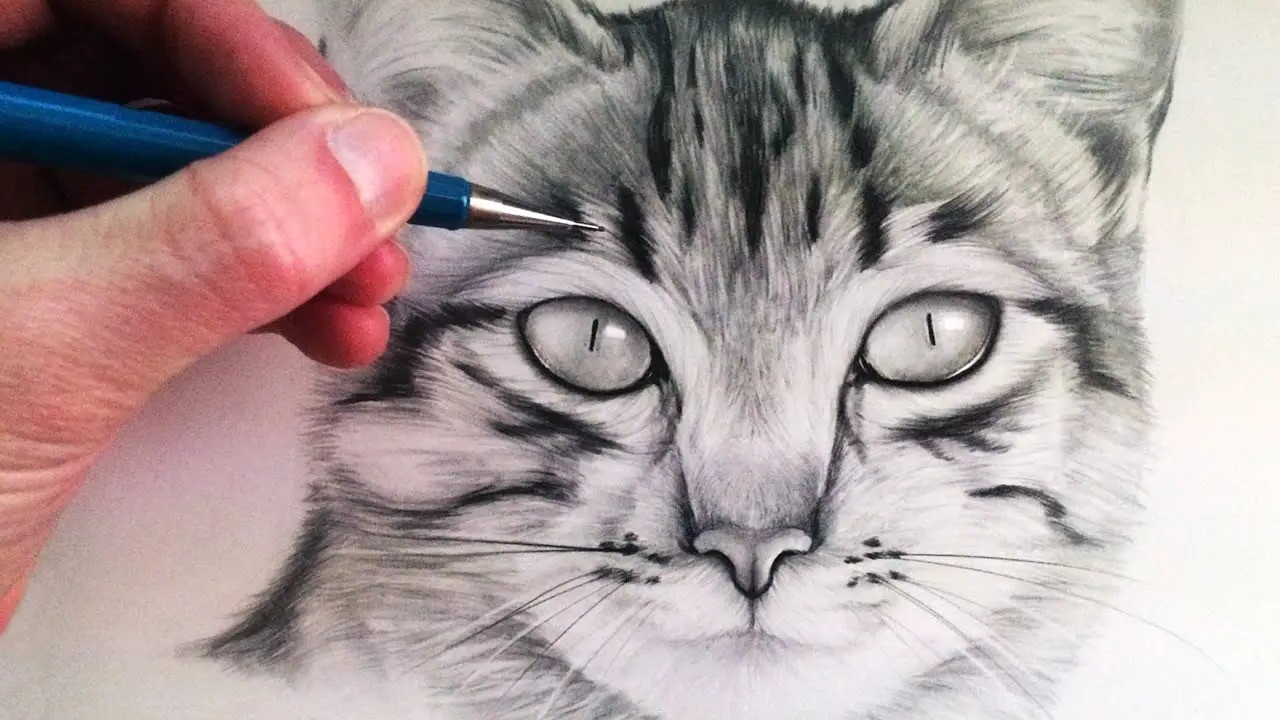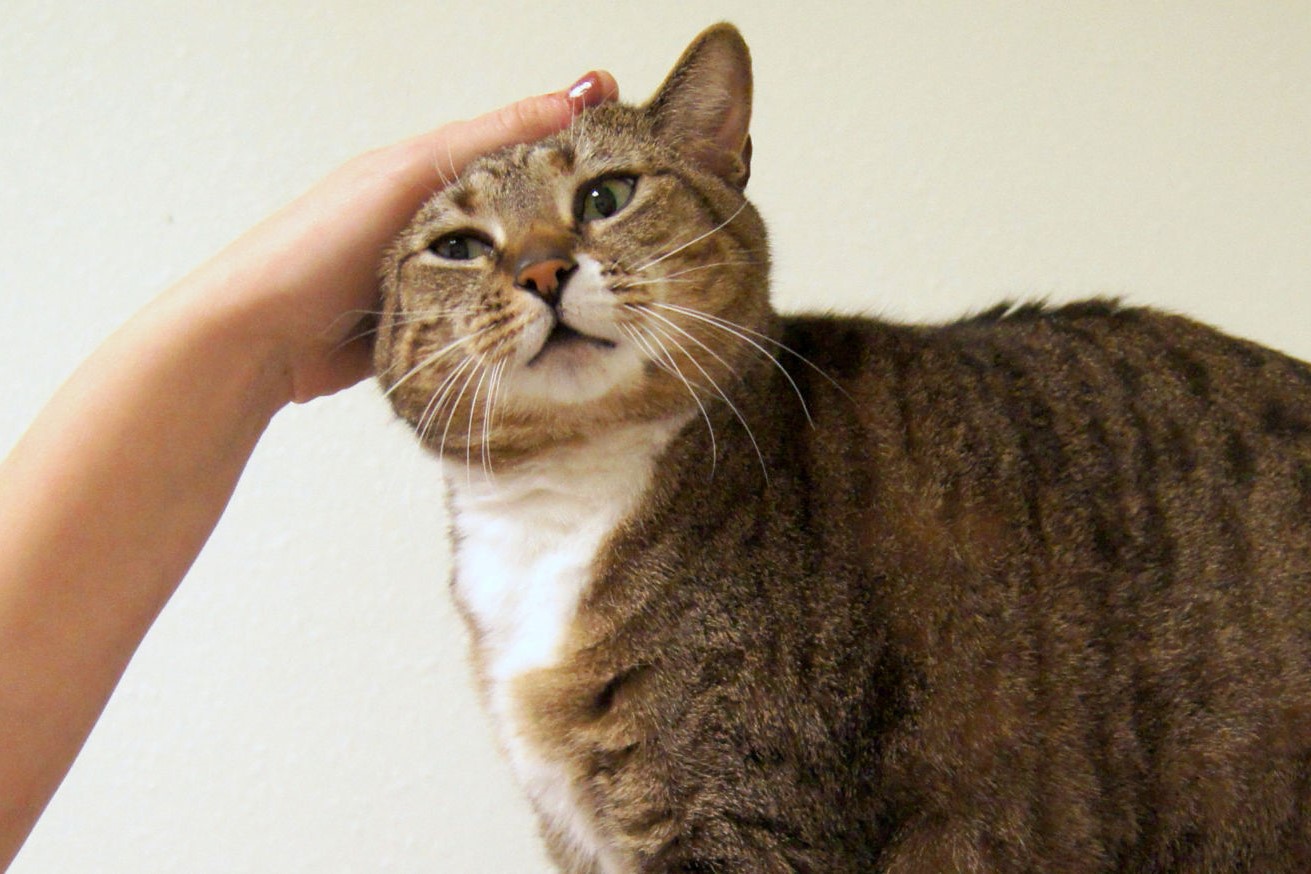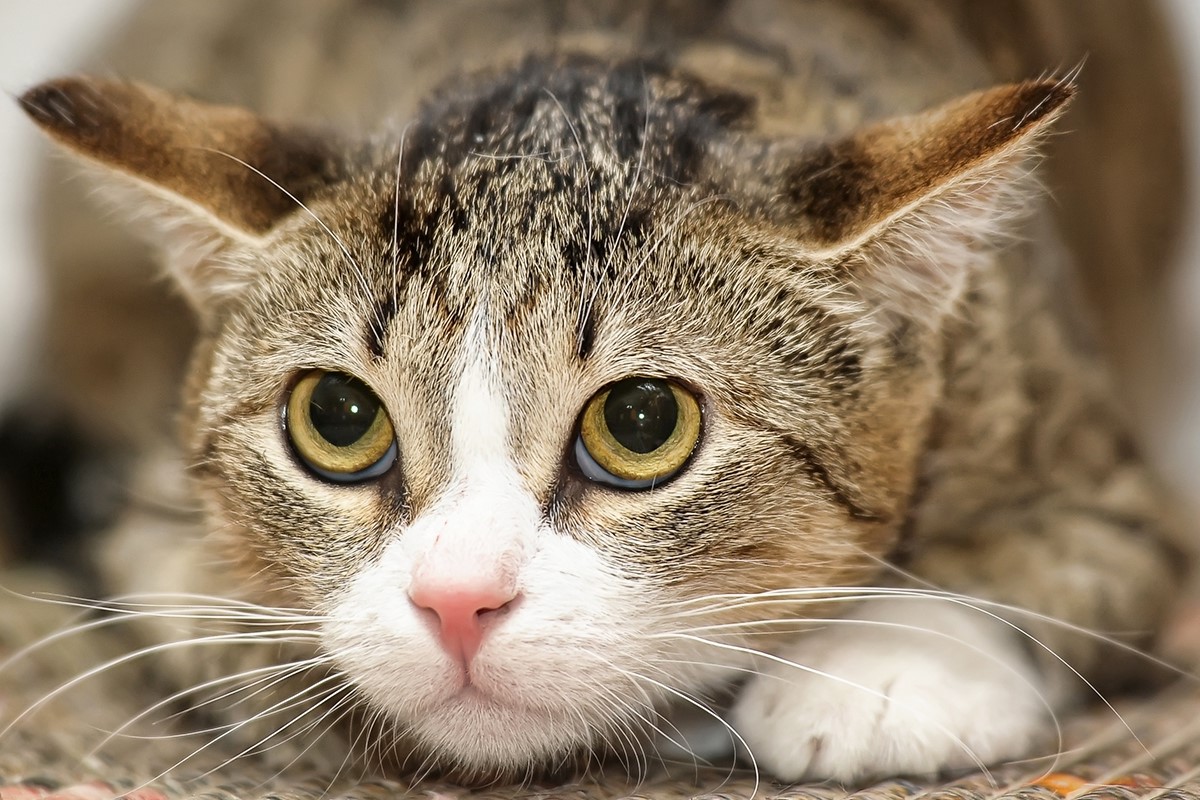Home>Pets & Animals>How To Manage Cat Shedding: Tips And Tricks


Pets & Animals
How To Manage Cat Shedding: Tips And Tricks
Published: March 7, 2024
Learn how to manage cat shedding with our expert tips and tricks. Keep your pets happy and your home clean with our helpful advice for pets and animals.
(Many of the links in this article redirect to a specific reviewed product. Your purchase of these products through affiliate links helps to generate commission for Noodls.com, at no extra cost. Learn more)
Table of Contents
Understanding Cat Shedding
Cat shedding is a natural and essential process that occurs as part of a feline's life cycle. Shedding is the natural way for cats to rid themselves of old or damaged hair, making way for new, healthy fur to grow. Understanding the factors that influence shedding can help cat owners manage this common occurrence effectively.
Read more: How To Get Cat Pee Out Of Couch
Shedding Cycles
Cats typically experience two major shedding cycles each year, with the most significant occurring in the spring and the other in the fall. These cycles are influenced by changes in daylight and temperature, triggering a cat's body to adjust its coat for the upcoming season. During these periods, cats may shed more profusely as they prepare for warmer or cooler weather.
Breed Variations
Different cat breeds exhibit varying degrees of shedding. While some breeds, such as the Siamese and Burmese, are known for minimal shedding, others, like the Maine Coon and Persian, are notorious for their heavy shedding. Understanding your cat's breed characteristics can provide insight into the expected shedding patterns and help you prepare accordingly.
Health and Stress
A cat's overall health and emotional well-being can also impact shedding. Cats experiencing stress, anxiety, or underlying health issues may exhibit excessive shedding as a physiological response. Regular veterinary check-ups and a nurturing, stress-free environment can help minimize stress-related shedding.
Age and Hormonal Changes
Kittens and senior cats may undergo more frequent shedding due to their age and hormonal fluctuations. Kittens often shed their baby fur as they transition into adulthood, while senior cats may experience changes in their coat due to age-related hormonal shifts.
Understanding the natural shedding process in cats is the first step in effectively managing and minimizing shedding. By recognizing the factors that influence shedding, cat owners can implement targeted strategies to keep their feline companions comfortable and their homes fur-free.
Tips for Managing Cat Shedding
Cats are beloved companions, but their shedding can sometimes become a challenge for pet owners. Fortunately, there are several effective tips for managing cat shedding and keeping it under control. By incorporating these strategies into your cat care routine, you can minimize the impact of shedding on your home and your cat's well-being.
-
Regular Brushing: One of the most effective ways to manage cat shedding is through regular grooming. Brushing your cat's coat helps to remove loose and excess fur, preventing it from accumulating on furniture and clothing. For long-haired breeds, daily brushing is recommended, while short-haired cats may benefit from brushing several times a week.
-
High-Quality Diet: Providing your cat with a balanced and nutritious diet can significantly impact shedding. High-quality cat food rich in essential nutrients, such as omega-3 fatty acids and protein, promotes healthy skin and coat, reducing excessive shedding. Consult with your veterinarian to select a diet tailored to your cat's specific needs.
-
Hydration: Proper hydration is essential for maintaining healthy skin and coat. Ensure that your cat has access to fresh water at all times to support overall coat health and minimize shedding. Additionally, incorporating wet food into your cat's diet can contribute to their overall hydration levels.
-
Supplements: In some cases, adding supplements such as omega-3 fatty acids or fish oil to your cat's diet can help reduce shedding and improve the condition of their coat. These supplements provide essential nutrients that support skin health, ultimately decreasing the amount of fur shed.
-
Regular Veterinary Check-Ups: Scheduling regular veterinary check-ups for your cat is crucial for identifying any underlying health issues that may contribute to excessive shedding. Addressing potential health concerns early can help manage shedding and ensure your cat's overall well-being.
-
Stress Management: Cats experiencing stress or anxiety may exhibit increased shedding. Creating a calm and enriching environment for your cat, complete with stimulating toys and cozy resting areas, can help reduce stress-related shedding.
-
Air Quality and Humidity: Maintaining optimal indoor air quality and humidity levels can also impact shedding. Using air purifiers and ensuring adequate humidity levels in your home can help minimize static electricity, which can contribute to excessive shedding.
By implementing these tips for managing cat shedding into your cat care routine, you can effectively reduce shedding and create a comfortable environment for both your feline companion and your household. Regular grooming, a balanced diet, and a stress-free environment are key components in managing shedding and promoting your cat's overall well-being.
Tricks for Minimizing Cat Shedding
Minimizing cat shedding can be a manageable task with the right tricks and techniques. By incorporating these strategies into your cat care routine, you can effectively reduce the impact of shedding on your home and maintain your cat's coat health.
1. Regular Bathing:
While cats are known for their self-grooming abilities, occasional baths can help reduce shedding by removing loose fur and dander. Use a gentle cat-specific shampoo and ensure thorough rinsing to prevent skin irritation. Bathing can also help distribute natural oils, promoting a healthier coat and minimizing shedding.
2. Proper Hydration:
Ensuring your cat is adequately hydrated is essential for maintaining healthy skin and coat, ultimately reducing shedding. Encourage water consumption by providing clean, fresh water in multiple locations throughout your home. Additionally, incorporating wet food into your cat's diet can contribute to their overall hydration levels, supporting coat health.
3. Regular Vacuuming and Cleaning:
Frequent vacuuming and cleaning of your home's surfaces, including furniture, carpets, and bedding, can help manage and minimize the impact of shedding. Using a vacuum with a pet hair attachment and washable, pet-friendly furniture covers can effectively remove and contain loose fur, preventing it from accumulating in your living spaces.
4. Air Quality Control:
Maintaining optimal indoor air quality and humidity levels can significantly impact shedding. Using air purifiers can help reduce airborne allergens and dander, while proper humidity levels can minimize static electricity, which can contribute to excessive shedding. These measures create a more comfortable environment for your cat and help manage shedding.
5. Regular Grooming Tools:
Incorporating specialized grooming tools, such as deshedding brushes and combs, into your cat's grooming routine can effectively minimize shedding. These tools help remove loose fur and prevent matting, promoting a healthier coat and reducing the amount of fur shed in your home.
6. Stress Reduction:
Creating a calm and enriching environment for your cat is essential for minimizing stress-related shedding. Providing stimulating toys, cozy resting areas, and regular interactive playtime can help reduce anxiety and promote a healthier coat, ultimately minimizing shedding.
By implementing these tricks for minimizing cat shedding into your cat care routine, you can effectively reduce shedding and create a comfortable environment for both your feline companion and your household. Consistent grooming, proper hydration, and a clean, stress-free environment are key components in managing shedding and promoting your cat's overall well-being.
Read more: How To Manage And Optimize IPhone Storage
Grooming Techniques for Controlling Shedding
Grooming plays a pivotal role in controlling shedding and maintaining the overall health and appearance of a cat's coat. By incorporating specific grooming techniques into your cat care routine, you can effectively minimize shedding and ensure your feline companion's comfort.
1. Regular Brushing:
Regular brushing is a fundamental grooming technique for controlling shedding in cats. It helps remove loose and excess fur, preventing it from accumulating on furniture and clothing. For long-haired breeds, daily brushing is recommended to prevent matting and reduce shedding. Short-haired cats can benefit from brushing several times a week to remove loose fur and distribute natural oils throughout the coat.
2. Deshedding Tools:
In addition to traditional brushes, deshedding tools such as grooming gloves, combs, and slicker brushes are highly effective in controlling shedding. These specialized tools are designed to remove loose undercoat fur, which is a common source of shedding. Using deshedding tools regularly can significantly reduce the amount of fur shed by your cat.
3. Bathing and Drying:
Occasional baths can help control shedding by removing loose fur and dander from the coat. Use a gentle cat-specific shampoo and ensure thorough rinsing to prevent skin irritation. After bathing, ensure your cat is thoroughly dried to prevent damp fur, which can lead to matting and increased shedding. Proper drying techniques, including towel drying and gentle blow-drying, can help maintain a healthy coat and minimize shedding.
Read more: How To Manage Alcohol Withdrawal Symptoms
4. Coat Conditioning:
Using cat-specific coat conditioning products can help maintain the health and luster of your cat's coat, ultimately reducing shedding. These products nourish the skin and coat, promoting a healthier shedding cycle. Additionally, coat conditioning can help prevent dryness and irritation, contributing to a reduction in shedding.
5. Professional Grooming:
For cats with long or dense coats, professional grooming services can be beneficial in controlling shedding. Professional groomers have the expertise and specialized tools to effectively remove loose fur, prevent matting, and maintain coat health. Regular professional grooming sessions can significantly reduce shedding and ensure your cat's coat remains in optimal condition.
By incorporating these grooming techniques into your cat care routine, you can effectively control shedding and promote the overall health and appearance of your cat's coat. Consistent grooming, the use of specialized tools, and proper coat maintenance are essential components in managing shedding and ensuring your feline companion's well-being.
Diet and Nutrition for Reducing Shedding
Proper diet and nutrition play a crucial role in reducing shedding and maintaining a healthy coat for your feline companion. By providing your cat with a balanced and nutrient-rich diet, you can effectively minimize excessive shedding and promote overall well-being.
Essential Nutrients
A cat's diet should include essential nutrients that support skin and coat health, ultimately reducing shedding. Omega-3 fatty acids, commonly found in fish oil, are particularly beneficial for promoting a healthy coat and minimizing shedding. These fatty acids help nourish the skin, reduce inflammation, and support the growth of a lustrous and resilient coat. Additionally, high-quality protein sources, such as chicken, turkey, and fish, contribute to coat health and aid in reducing shedding.
Read more: How To Handle A Cat In Heat
Hydration and Moisture
Proper hydration is essential for maintaining healthy skin and coat, which directly impacts shedding. Ensuring that your cat has access to clean, fresh water at all times is crucial for supporting overall coat health and minimizing shedding. Additionally, incorporating wet or canned food into your cat's diet can contribute to their overall hydration levels, further promoting a healthy coat and reducing shedding.
Balanced Diet
A balanced and nutritionally complete diet is essential for reducing shedding in cats. Selecting high-quality cat food that is specifically formulated to support skin and coat health can significantly impact shedding. Look for cat food that contains a blend of essential nutrients, including vitamins, minerals, and antioxidants, to promote a healthy coat and minimize shedding. Consulting with your veterinarian can help you identify the most suitable diet for your cat's specific needs and shedding concerns.
Supplements
In some cases, adding supplements to your cat's diet can aid in reducing shedding and improving coat condition. Omega-3 fatty acid supplements or fish oil capsules can provide an additional boost of essential nutrients that support skin and coat health, ultimately minimizing shedding. However, it is important to consult with your veterinarian before introducing any supplements to ensure they are appropriate for your cat's individual needs.
By prioritizing a balanced and nutrient-rich diet, ensuring proper hydration, and incorporating essential nutrients and supplements, you can effectively reduce shedding and promote a healthy coat for your cat. A well-nourished and healthy coat not only enhances your cat's appearance but also contributes to their overall comfort and well-being.
Environmental Factors that Impact Shedding
Environmental factors play a significant role in influencing the shedding patterns of cats. Understanding these factors can help cat owners create a conducive environment that minimizes shedding and promotes the overall well-being of their feline companions.
Read more: SQL Managed Instance Maintenance
Temperature and Seasonal Changes
Temperature and seasonal variations have a direct impact on a cat's shedding patterns. As the seasons change, cats naturally adjust their coats to adapt to the prevailing temperatures. In preparation for warmer weather, cats shed their thick winter coats, replacing them with lighter, cooler fur. Conversely, as colder temperatures approach, cats shed their lighter coats to make way for a denser, insulating fur layer. These shedding cycles are essential for regulating a cat's body temperature and ensuring comfort throughout the year.
Indoor Environment
The indoor environment, including temperature, humidity levels, and air quality, can significantly influence shedding. Maintaining a comfortable indoor temperature and adequate humidity levels can help minimize excessive shedding. Dry indoor air can lead to skin dryness and irritation, triggering increased shedding. Using air purifiers to reduce airborne allergens and maintaining optimal humidity levels can create a healthier environment for cats, ultimately impacting shedding patterns.
Stress and Anxiety
Stress and anxiety are known to affect shedding in cats. Environmental stressors, such as changes in routine, new additions to the household, or loud noises, can lead to heightened shedding as a physiological response. Creating a calm and enriching environment for cats, complete with cozy resting areas, interactive toys, and predictable routines, can help reduce stress-related shedding and promote a healthier coat.
Sunlight Exposure
Sunlight exposure plays a role in regulating a cat's shedding cycles. Changes in daylight duration can trigger shedding as cats adapt to seasonal variations. Exposure to natural sunlight is essential for maintaining a cat's circadian rhythm, which, in turn, influences shedding patterns. Providing access to natural light and outdoor spaces, where safe and appropriate, can support a cat's natural shedding cycles.
Overall Well-Being
A cat's overall well-being, including diet, hydration, and exercise, can impact shedding. A balanced diet rich in essential nutrients, proper hydration, and regular exercise contribute to a healthy coat and minimized shedding. Additionally, regular veterinary check-ups can help identify any underlying health issues that may contribute to excessive shedding, ensuring a cat's overall well-being and coat health.
By considering and addressing these environmental factors, cat owners can create a supportive and nurturing environment that minimizes shedding and promotes the overall comfort and health of their feline companions.
Conclusion: Keeping Your Cat's Shedding Under Control
Managing your cat's shedding is a multifaceted endeavor that requires a combination of proactive measures and a deep understanding of your feline companion's needs. By integrating regular grooming, a balanced diet, and a stress-free environment into your cat care routine, you can effectively minimize shedding and create a harmonious living space for both you and your cat.
Consistent grooming, including daily brushing for long-haired breeds and regular grooming sessions for short-haired cats, is paramount in controlling shedding. The use of specialized deshedding tools and occasional baths can further aid in removing loose fur and maintaining a healthy coat. Additionally, ensuring your cat's diet is rich in essential nutrients, such as omega-3 fatty acids and high-quality protein, supports coat health and reduces shedding.
Creating a stress-free environment for your cat, complete with enriching activities and predictable routines, can significantly impact shedding. Managing indoor air quality, maintaining optimal humidity levels, and providing access to natural sunlight contribute to a conducive environment that minimizes shedding. Furthermore, addressing any underlying health concerns through regular veterinary check-ups is essential in managing shedding and ensuring your cat's overall well-being.
By implementing these strategies and understanding the environmental and physiological factors that influence shedding, you can effectively keep your cat's shedding under control. Minimizing shedding not only contributes to a cleaner and more comfortable living space but also promotes your cat's physical and emotional well-being.
Ultimately, by prioritizing grooming, nutrition, and a nurturing environment, you can create a harmonious coexistence with your feline companion while effectively managing shedding. Embracing these practices fosters a strong bond with your cat and ensures that both you and your beloved pet can enjoy a fur-free and contented life together.








